Step-by-Step Guide for Crafting a Bird Feeder with Kids
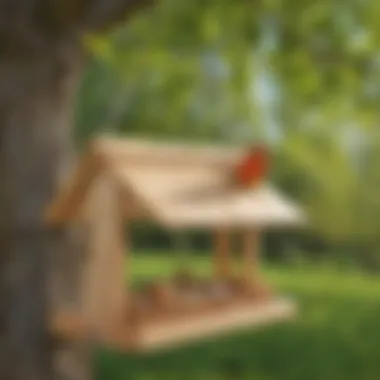
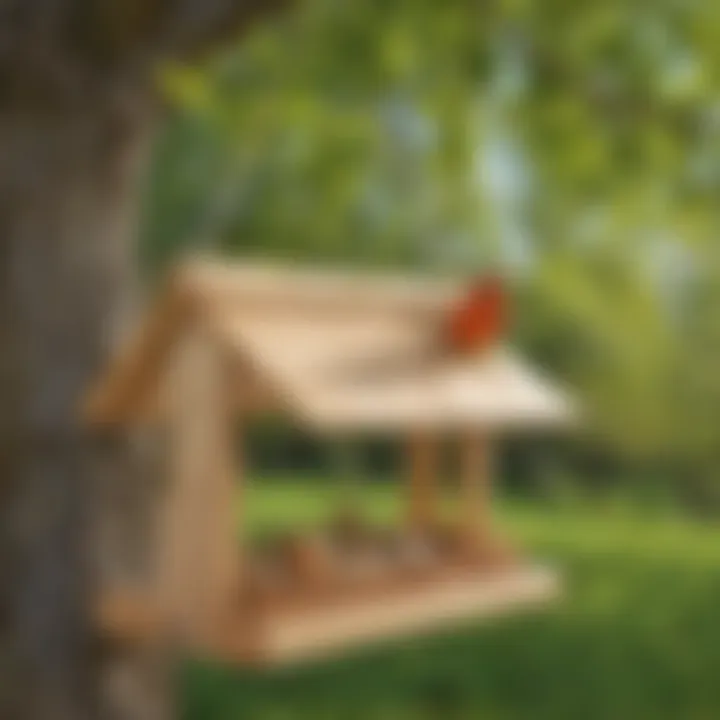
Science Fun Fact
As we embark on the exciting journey of creating a bird feeder, let's delve into some interesting trivia about our feathered friends. Did you know that different bird species have unique beak shapes specially adapted to their diet? For example, woodpeckers have long, chisel-like beaks to penetrate tree bark, while hummingbirds have slender beaks ideal for sipping nectar. Understanding these adaptations can deepen our appreciation for the diverse avian world around us.
Discover the Wonders of Science
In this section, we will explore the fascinating scientific concepts behind bird feeding. From understanding how birds locate food using their keen senses to the role of different nutrients in their diets, we will unravel the mysteries of avian nutrition. Through engaging educational videos and interactive learning tools, young learners can gain valuable insights into the biological principles that govern bird behavior.
Science Experiment Showcase
Get ready for a hands-on science experiment that combines creativity and practicality! Crafting a bird feeder involves step-by-step instructions that emphasize safety and precision. You will need materials like sturdy wood, non-toxic paint, and durable twine to ensure a bird-friendly and long-lasting feeder. Remember to follow safety tips, such as wearing protective gear when using tools and selecting an appropriate location to hang your feeder.
Let's proceed with the next sections to uncover more about the art of making a bird feeder, merging scientific knowledge with artistic craftsmanship.
Introduction
In this illuminating guide on constructing a bird feeder, we embark on a journey delving into the realm of nature exploration and hands-on craftsmanship. Creating a bird feeder serves as a conduit for fostering curiosity, creativity, and a deeper connection with the avian world. As young Science Buddies, aged between 6-12, set foot on this educational endeavor, they are poised to unlock a treasure trove of learning experiences. By engaging in the construction of a bird feeder, children not only hone their practical skills but also cultivate a sense of responsibility towards wildlife and ecosystems.
The act of constructing a bird feeder transcends being a mere crafting project; it transforms into a gateway for youngsters to witness the subtle nuances of coexisting with nature. Through each meticulous step involved in the creation process, children are encouraged to observe the intricate beauty of birds and their natural habitat. By instilling a sense of stewardship through this project, youngsters learn to appreciate the importance of providing sustenance to our feathered friends while balancing the ecosystem's delicate harmony.
Embracing this endeavor ignites a spark of curiosity within children, urging them to explore the wonders of nature up close. This hands-on activity not only sharpens their motor skills but also stimulates their cognitive abilities as they make informed decisions during the crafting process. As the chirping melodies of birds fill the air around their newly constructed feeder, children are greeted with a sense of accomplishment, knowing they have contributed to the well-being of these delightful creatures.

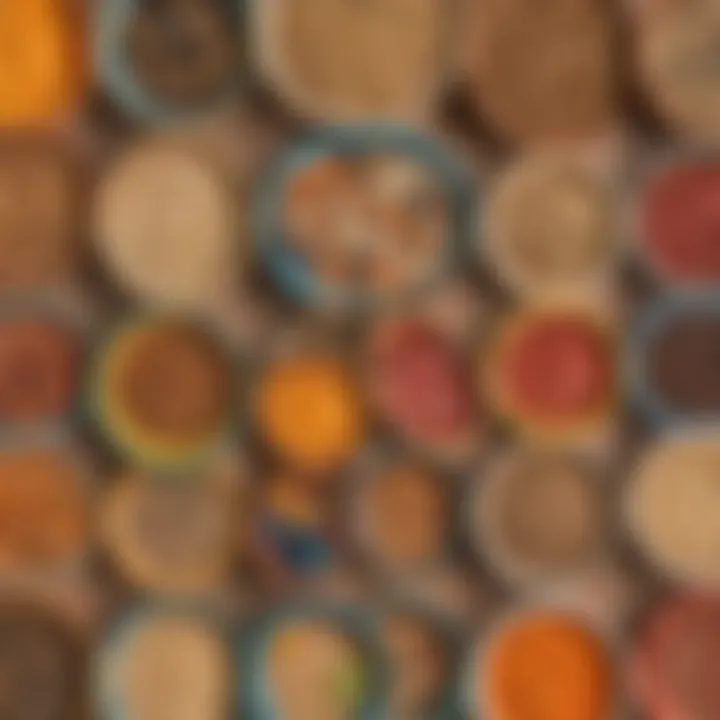
By immersing themselves in the creation of a bird feeder, children dive into a world where learning unfolds through touch, sight, and sound. This practical and engaging project opens doors to a realm where science, creativity, and ecology converge seamlessly. As we embark on this journey of crafting a bird feeder, we invite young minds to embrace the wonders of the avian world and nurture their inquisitive spirits.
Materials Needed
When embarking on the journey of creating a bird feeder, the selection of materials is crucial. Understanding the materials needed not only ensures a successful project completion but also promotes learning and engagement among young minds. One such key material is wood, known for its durability and versatility. Wood serves as the foundational component, providing structural integrity to the feeder. Opting for sturdy wood types like cedar or redwood enhances the longevity of the feeder, withstanding various weather conditions. Additionally, wood offers a natural aesthetic appeal, blending seamlessly with outdoor environments and attracting feathered friends.
Moving on to screws and nails, these seemingly small components play a significant role in the assembly process. Screws provide a secure fastening method, keeping the feeder intact and stable. When selecting screws, opt for rust-resistant ones to maintain the feeder's structural integrity over time. Nails, on the other hand, offer additional support and reinforcement to the feeder's frame. Choosing the right size and type of nails ensures proper assembly, preventing any mishaps during the feeder's use.
Last but not least, bird seed, the essential sustenance for our avian visitors. Bird seed selection is crucial in attracting a diverse range of bird species to your feeder. Opt for high-quality bird seed blends containing a mix of seeds like sunflower, millet, and nyjer to cater to various bird appetites. Considering the season and local bird species prevalent in your area is vital when choosing the right bird seed mix. Providing a consistent supply of fresh bird seed ensures regular visits from our feathered friends and supports their health and well-being. Remember, the right bird seed mix enhances the overall bird-watching experience, creating a harmonious environment for both birds and enthusiasts.
Step-by-Step Guide
Bird feeders are essential to attract our avian friends to our outdoor spaces and provide them with sustenance. This pivotal section will guide you through the intricacies of crafting a feeder that is both functional and visually pleasing. Understanding these steps is critical in the successful completion of your bird feeder project. Each step contributes to the overall stability and attractiveness of your feeder, ensuring it becomes a welcoming spot for various bird species in your vicinity.
Step 1: Cutting the Wood
The first step in this enriching journey involves the precise cutting of the wood pieces. Utilizing a high-quality saw and accurate measurements, carefully cut the wood into specified dimensions. The accuracy of these cuts will determine the structural integrity of your feeder, providing a secure foundation for the assembly stage. Be meticulous in your measurements to guarantee that each piece fits seamlessly with the next, creating a sturdy and durable feeder that can withstand outdoor elements and daily bird visits.
Step 2: Assembling the Feeder
Assembling the feeder is where individual wood pieces come together to form a cohesive unit. Use screws and nails to secure each component firmly in place, ensuring stability and durability. Attention to detail during this step is crucial, as any loose fittings can compromise the integrity of the feeder. By following the instructions closely and employing precision in your work, you will create a finished product that is not only functional but also aesthetically pleasing, adding a charming touch to your outdoor space.
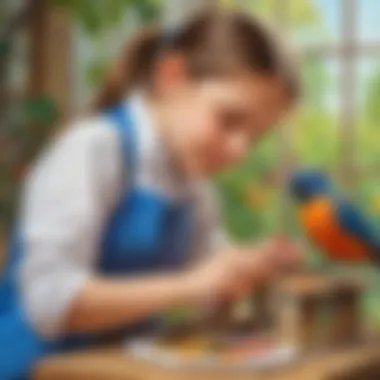
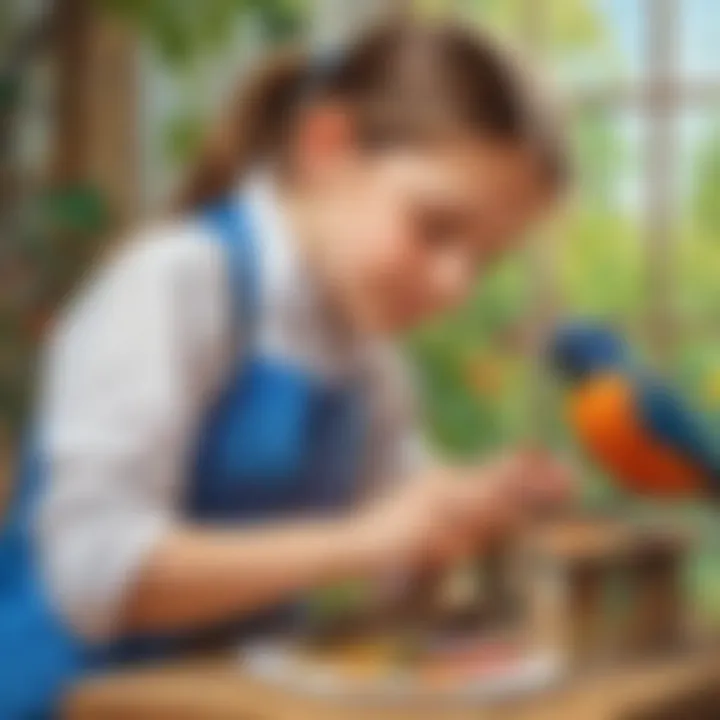
Step 3: Adding Bird Seed
The final step in this rewarding process involves filling your completed bird feeder with an ample supply of bird seed. Choose a high-quality seed mix that attracts a variety of bird species, ensuring a diverse and vibrant avian community visits your feeder. When adding the seed, remember to fill the feeder adequately without overfilling to prevent wastage and potential seed spoilage. This step completes the construction of your feeder, transforming it from a decorative piece into a vital food source for our feathered friends.
Decorating Your Bird Feeder
In this section on decorating your bird feeder, we delve into the vital aspects that elevate the functionality and aesthetics of your avian abode. Decorating your bird feeder serves as a crucial step in not only attracting feathered friends but also in enhancing the overall appeal of your outdoor space. By paying attention to details such as colors, designs, and additional features, you create a welcoming environment that nourishes both the birds and your aesthetic sensibilities.
Elaborating on the importance of decorating your bird feeder within the scope of this article, we spotlight how it transforms a simple feeder into a focal point of your backyard, attracting a variety of bird species. The visual appeal of the feeder can also serve as a delightful educational tool for children, teaching them about bird behavior and habitats through observation and interaction with the feeder.
Moreover, when focusing on decorating your bird feeder, considerations about weather resistance, non-toxic materials, and easy maintenance come to the forefront. Ensuring that your feeder is both visually captivating and durable against the elements ensures a sustainable habitat for your avian visitors, fostering a harmonious coexistence between nature and human intervention.
Painting
The process of painting your bird feeder entails more than just adding color; it involves safeguarding the wood against moisture, pests, and wear. Choose non-toxic, bird-safe paints in earthy tones that blend seamlessly with your outdoor setting. Before painting, lightly sand the feeder to create a smooth surface for paint adherence. Apply several thin coats, allowing each one to dry completely before adding the next to ensure durability.
Painting not only serves an aesthetic purpose but also acts as a protective shield, extending the lifespan of the feeder. By incorporating painting into the decorating process, you not only enhance the visual appeal but also fortify the feeder against environmental factors, making it a sustainable habitat for generations of feathered visitors to come.
Adding Perches
When discussing the addition of perches to your bird feeder, we address the functional aspect of providing resting spots for birds while feeding. Perches offer a convenient landing place for birds, promoting longer visits and enabling easy access to the birdseed. Consider the size and placement of perches to accommodate different bird species, ensuring a welcoming space for birds of various sizes.
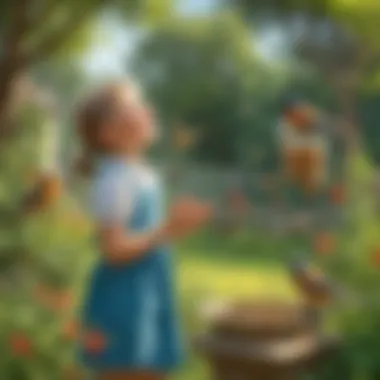
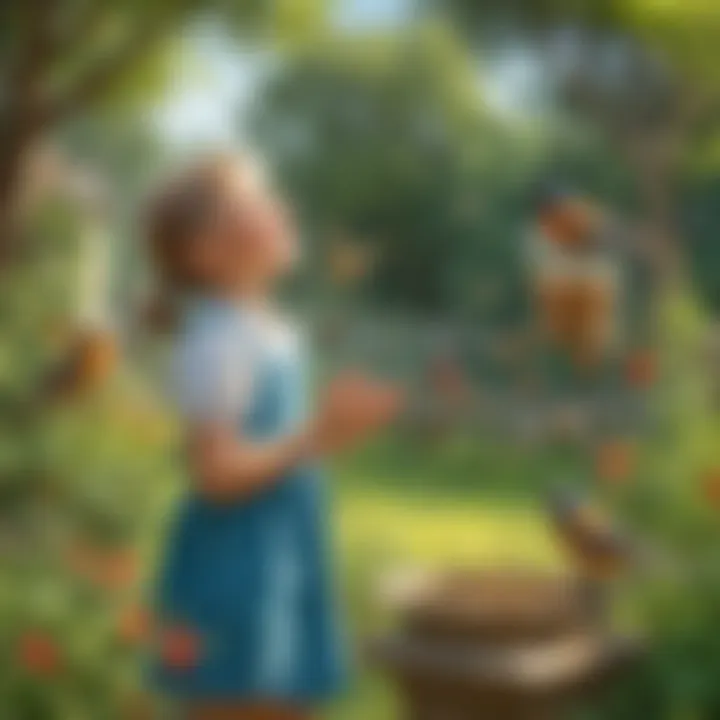
Incorporating perches into your feeder design involves thoughtful consideration of materials that are comfortable for birds to grip, such as untreated wood or textured surfaces. Additionally, ensure that the perches are securely attached to prevent accidents and provide stability for visiting birds. By adding perches to your feeder, you create a bird-friendly environment that encourages prolonged birdwatching opportunities and fosters a deeper connection with nature.
Benefits of Making a Bird Feeder
Creating a bird feeder offers a multitude of benefits beyond just providing food for our feathered friends. One of the primary advantages is the opportunity it presents for fostering a deeper connection with nature. By engaging in the process of making a bird feeder, children aged 6-12 can develop a sense of responsibility towards the environment and the creatures that inhabit it. This hands-on activity encourages them to observe and appreciate the beauty of birds, instilling in them a curiosity and respect for wildlife.
Moreover, constructing a bird feeder serves as an educational tool, offering valuable lessons in resourcefulness and creativity. Children learn not only about the importance of feeding birds but also about the different species that may visit their feeder. This experiential learning can spark an interest in ornithology and environmental conservation, laying the foundation for a lifelong appreciation of nature.
Additionally, making a bird feeder can be a fulfilling and rewarding experience for children, boosting their self-confidence and sense of accomplishment. As they witness birds enjoying the feeder they crafted, they can take pride in their contribution to supporting local wildlife. This sense of achievement can motivate them to engage in more hands-on projects and activities, enhancing their problem-solving skills and overall development.
Promotes Nature Exploration
Promoting nature exploration through the creation of bird feeders is a fantastic way to encourage children to step outdoors and engage with the natural world. By setting up bird feeders in their backyard or local park, children can observe birds up close, learning about their behaviors and habitats. This first-hand experience fosters a sense of wonder and curiosity, igniting a passion for nature that can extend beyond the confines of the project.
Furthermore, nature exploration through bird feeding provides a sensory-rich experience for children, stimulating their senses of sight, sound, and touch. The bustling activity around the feeder, the different chirps and calls of visiting birds, and the textures of various seeds all contribute to a holistic learning journey. This sensory engagement not only enriches their understanding of the avian world but also enhances their cognitive and sensory development.
In essence, promoting nature exploration through bird feeder creation not only connects children to the natural environment but also nurtures their sense of wonder and discovery. It reinforces the importance of conservation and stewardship, inspiring them to become responsible caretakers of the Earth's ecosystems.
Conclusion
The culmination of crafting a bird feeder is highly rewarding, offering a multitude of benefits for both the creator and the environment. In the world today, where technology often overshadows the beauty of nature, engaging in a hands-on project like building a bird feeder can instill a deep appreciation for wildlife and conservation, especially among the younger generation.
Furthermore, by interacting with nature in such a tangible way, children can develop a sense of responsibility towards the environment from a tender age. Understanding the needs of birds and providing them with a feeder not only nurtures empathy but also fosters a curiosity to learn more about the avian species that visit the feeder.
One of the key takeaways from this project is the promotion of biodiversity and the importance of creating a welcoming habitat for birds in urban settings. Encouraging children to participate in making a bird feeder contributes towards creating small pockets of wildlife-friendly spaces, which in turn aids in maintaining a healthy ecological balance in our neighborhoods.
Moreover, building a bird feeder is not just a solitary activity; it can be a shared experience that strengthens bonds between family members or friends. Working together towards a common goal fosters teamwork, communication, and problem-solving skills, all of which are crucial for a child's overall development.
In essence, the act of creating a bird feeder transcends the mere construction of a functional object. It symbolizes a connection with nature, an appreciation for wildlife, and a commitment to preserving our natural surroundings for future generations to cherish and enjoy. Embracing this craft not only benefits the birds that visit but also enriches the lives of those who partake in this enriching experience.







